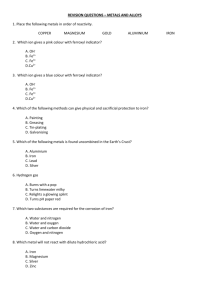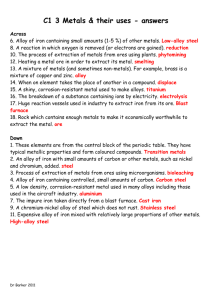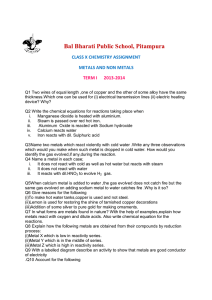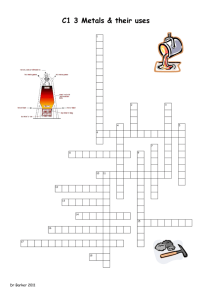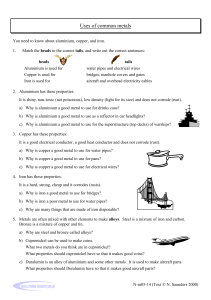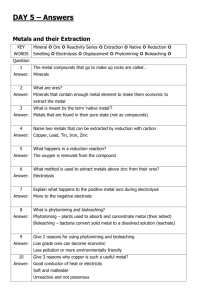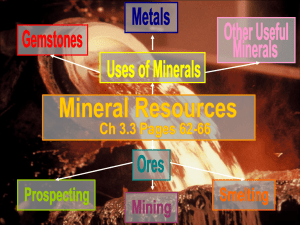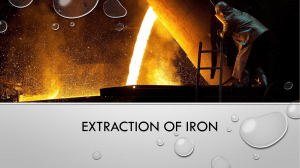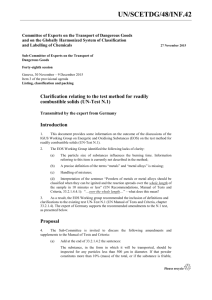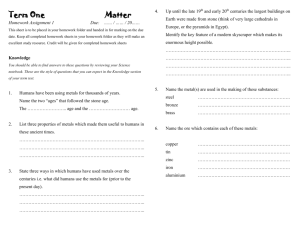Metals - Letstonesspeak
advertisement
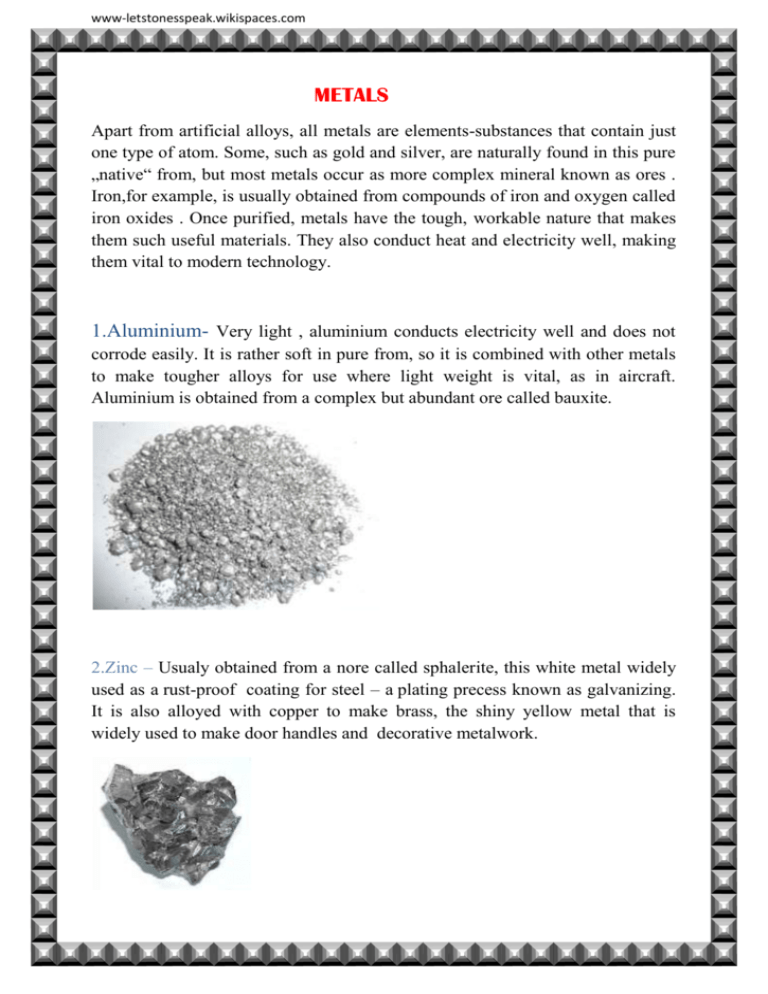
www-letstonesspeak.wikispaces.com METALS Apart from artificial alloys, all metals are elements-substances that contain just one type of atom. Some, such as gold and silver, are naturally found in this pure „native“ from, but most metals occur as more complex mineral known as ores . Iron,for example, is usually obtained from compounds of iron and oxygen called iron oxides . Once purified, metals have the tough, workable nature that makes them such useful materials. They also conduct heat and electricity well, making them vital to modern technology. 1.Aluminium- Very light , aluminium conducts electricity well and does not corrode easily. It is rather soft in pure from, so it is combined with other metals to make tougher alloys for use where light weight is vital, as in aircraft. Aluminium is obtained from a complex but abundant ore called bauxite. 2.Zinc – Usualy obtained from a nore called sphalerite, this white metal widely used as a rust-proof coating for steel – a plating precess known as galvanizing. It is also alloyed with copper to make brass, the shiny yellow metal that is widely used to make door handles and decorative metalwork. www-letstonesspeak.wikispaces.com 3.Titanium - Like aluminium this is a very lightweight metal-but it is harder and much stronger. I tis also much rarer, so it usually combined with other metals to make the touh, yet light alloys used in aircraft and spacecraft. Its main ore is a compound of oxygen and titianium called rutile. 4.Lead- Very heavy, and with a low melting point, lead is also very soft and easy to work. It has been used to make all kinds of things, from Roman weter pipes to modern lead-acid car batteries. The main ore is compound of lead and sulphur called galena. 5.Nickel- This metal probably forms about a fifth of Earth´s inner core, the rest being iron. At the surface, it occurs in the form of complex ores succh as garnierite. Iron and nickel are combined to make strong, corrosion-proof stainless steel, one the most useful alloys. www-letstonesspeak.wikispaces.com 6.Iron- Forming most of Earth´s core and very common in rosks and soils, iron is the most abundant metal on the planet. It is a very important material because of its hardness, even thought it is brittle and corrodes badly. Iron is refined into steel, which is springy and easier to work. 7.Tin- About 4,000 years ago, early metal-workers discoverd that mixing a small amount of molten tin with molten copper made a much stronger alloy, bronze. They obtained the tin by heating ores such as greenish cabout 1,000 C in a charcoal furnace. 8.Copper- This was one of the first metals to be used by humankind, from about 7,000 years ago. This is because, like gold, it can be found in its native form. An excellent conductor of electricity, it is widely used in the form of copper wire. www-letstonesspeak.wikispaces.com 9.Gold- Since gold does not easily combine with any other element, it is usually found as gleaming nuggets or grains. This also means that it does not tarnish, a fact that-combined with its rarity-has always made it valuable. Although very heavy, it can be beaten into very thin sheets. 10.Mercury- The only metal that is liquid at room temperature, mercury is obtained form a colorful ore called cinnabar. The metal is best known for its use in medical thermometers, but it is also used to make batteries, electronic components, and the silvery blacking of glass morrors. 11.Silver- Like gold,silver is a rare metal that is soft, easy to work, and found in its native form-all qualities that have made it highly valued for thousands of years. Unlike gold, it tarnishes, but it is very attractive when polished.

